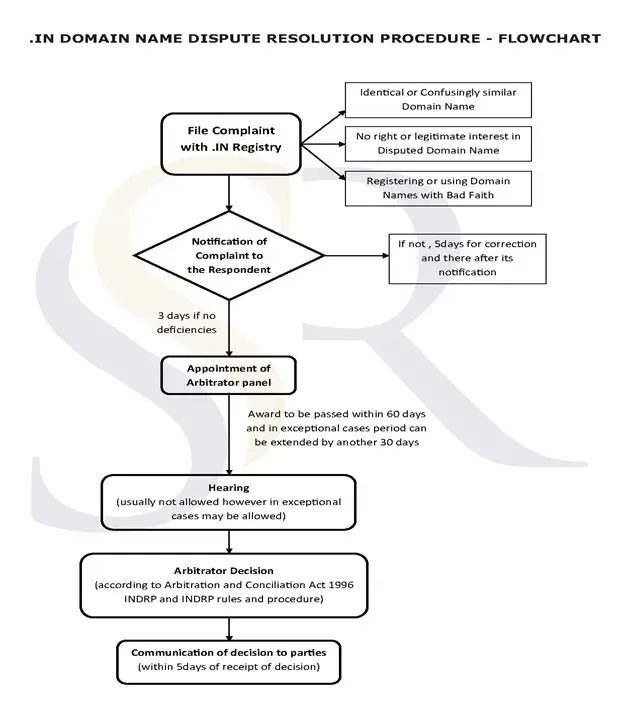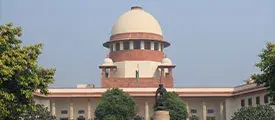FAQs on domain names in India
List of domain names faqs in India
DOMAIN NAMES IN INDIA
With the inception, advent and rapid globalization of the Internet
a revolutionary change is witnessed in the field of communications. Internet
has become a cornerstone in every establishment be it commercial organizations,
government bodies or institutions. It is being significantly used for banking,
research, education and entertainment.
The domain name system enables the trademark holders to enforce their rights
over domain names that are similar or identical to their existing trademarks,
particularly by seeking control over the domain names at issue.
The profound use of internet in e-commerce and e-communication has also raised
concerns in the realm of intellectual property. The rampant growth of websites
has given rise to the domain name disputes. The issues of cybersquatting and
domain name hijacking has become the bone of contention among companies who
have invested significant amount of money and time in their mark only to
realize that their names and trademarks have been taken up by e-pirates.
DOMAIN NAMES REGISTRATION IN INDIA
India’s top-level domain names on the Internet are .IN and .CO.IN. Just like .COM, .IN and .CO.IN can be used for e-mail, Web sites, and other applications. .IN and .CO.IN are unique symbols and are able to inform the public at large that the website or domain name is INDIA specific.
The .IN domains were made available to the general public on February 16, 2005.
However a sunrise period for registering the Top Level Indian Domain name was
offered to right holders from January 1 to January 21, 2005. Therefore owners
of registered Indian trademarks or service marks who wished to protect their
marks were given the opportunity to apply for .IN domain names before the
general public.
Domain registration of .IN and .CO.IN has been made hassle-free to promote this
domain. The domain registration procedure is quite simple and everyone has
access to it. .IN domain names are obtainable for sign-up through many
registrars and obtaining a .IN domain has become a relatively simple process.
Domain registration of .IN and .CO.IN are available for organizations and
individuals in India and outside India. The domain registration is done by
registrars appointed by .IN registry and would happen through a transparent
non-biased process. To register a domain name, the registrant has to place a
request online and the .IN domain name is usually registered in his name within
24 hours as per the guidelines established by the Government.
INDRP(.IN DOMAIN NAME DISPUTE RESOLUTION POLICY)IN INDIA
As far as proceedings for domain name dispute is concerned, it is very difficult and cumbersome to ascertain the jurisdiction as internet is a global medium. A proceeding will have to be initiated in every country where country code top level domain (ccTLD) is registered. Also as the cost of registering a domain name is extremely low in comparison to the cost of litigation, the traditional court proceedings are not always practical for the domain name dispute resolution.
Because of aforementioned factors the .IN Dispute Resolution Policy (INDRP) was formulated by the .IN Registry for the domain name dispute resolution in India. The .INDRP claims to be in line with internationally accepted guidelines and relevant provisions of the Indian Information Technology Act 2000. The INDRP is available for complaints regarding any domain name within the “.in” ccTLD and the decision of the same is made binding under the Arbitration and Conciliation Act 1996 of India. The .INDRP has over the years proved to be cost and time efficient in comparison to the court proceedings.
The INDRP is a policy which is applicable for .in domain names.
.in’ is the country code Top Level Domain (ccTLD) for India and is administered by INRegistry which is an autonomous body under the National Internet Exchange of India (NIXI). Registration for .in Domain Names are done not by the INRegistry but by accredited Registrars who have been appointed for this purpose. Anyone can register a .in domain name and not necessarily an Indian, or a body incorporated in India.
“.in” domain name disputes are resolved in accordance with the .IN Dispute Resolution Policy (INDRP) and the INDRP Rules of Procedure
The Terms of the INDRP requires the registrant to submit to a mandatory arbitration proceeding relating to complaints received by the IN Registry over abusive registration of the domain name.
The INDRP outlines the types of disputes that can be brought & the criteria that will be considered by the arbitrators.
The arbitrator usually considers the domain name registered and used in bad faith in circumstances when:
• the registrant has acquired the domain name primarily for the purpose of selling, renting, or otherwise transferring the registration to the owner of the trademark or service mark, or to a competitor of the complainant, for valuable consideration in excess of the registrant’s documented out-of-pocket costs directly related to the domain name; or
• the registrant has registered the domain name in order to prevent the owner of the trademark or service mark from reflecting the mark in a corresponding domain name, provided that the registrant has engaged in a pattern of such conduct; or
• the registrant has intentionally attempted to attract Internet users to his website or other online location, by creating a likelihood of confusion with the complainant’s name or mark as to the source, sponsorship, affiliation, or endorsement of the registrant’s website or of a product or service on the registrant’s website.
The INDRP Rules of Procedure describe:
1. How to file a complaint
2. How to respond to a complaint
3. The fees
4. Communications, and
5. Other procedures.
Grounds for filing complaintA complaint can be filed with the .IN Registry on the following grounds
1. The Registrant’s domain name is identical or confusingly similar to a name, trademark or service mark in which the complainant has rights
2. The Registrant has no rights or legitimate interests in respect of the domain name
3. The Registrant’s domain name has been registered or is being used in bad faith.
DOMAIN NAMES IN INDIA- FLOWCHART

ADVANTAGES OF INDRP (.IN DOMAIN NAME DISPUTE RESOLUTION POLICY) IN INDIA
It is an undisputed fact that .INDRP serves an important and crucial role to resolve domain name disputes in an out of court proceedings.
Key advantages of the .INDRP procedure are:a). mandatory implementation of the resulting decisions.
b). process is quite transparent as the .IN Registry posts all disputed domain names, case
status, case statistics and full text of decision on its website.
c). process is fair and effective and the trademark owners have prevailed in majority of the
decisions.
DOMAIN NAMES – CASE LAWS IN INDIA
A trend of increased disputes over web addresses is gaining ground in India over the past few years as companies recognize the commercial potential on the Internet. While the global marketing and advertising strategies through Internet constitutes considerable potential for business expansion the utilization of the trademark on Internet is still a complex issue. The conflict between various issue regarding domain name disputes and legal protection needs to be properly addressed so as to strike a balance between the rights of the trademark holders and the rights of the public to use the words in the English language in legitimate ways, as ably reflected in domain name dispute of business.in, where the domain name was considered generic and hence was cancelled and forfeited by NIXI. Following are some cases which have been decided successfully by NIXI
Starbucks Corporation v. Mohanraj (Decided on 26th November, 2009)
Respondent’s domain name www.starbucks.co.in was confusingly similar to complainant’s domain name www.starbucks.in. It was contended that the domain name of the respondent is identical & confusingly similar to the complainant’s domain name. Also, it was contended that the respondent had no legitimate interest in the domain name. Further it was contended that the mark was used by the respondent in bad faith.
The respondent on the other hand contended that at the time of registration the .IN registry or his registrar didn’t ask him to submit any supportive documents to register the domain name. The respondent further submitted that that the complainant had neglected the disputed domain name for 4 years at the time of registering www.starbucks.in even though the .co .in was available before the .in extension was released. The respondent prayed for cancellation of complaint and to allow him to use the domain name for his own purpose of another business which would not be in complainant’s industry.
The rejoinder submitted by the complainant stated that the mere fact that at the time of booking/ registering the domain name www.starbucks.co.in the .in registry or his registrar did not ask respondent to submit any supportive documents / evidence to register the Domain, did not bestow upon him any absolute right in the said domain name. Further it was submitted that respondent had not given any explanation as to how he came about adopting or hit upon the domain name www.starbucks.co.in, when he is the registered proprietor of the trade mark Starbucks in India since 1995. Also it was submitted that the respondent is neither commonly known as Starbucks nor making a legitimate or fair use of the said domain name. The complainant further submitted that the domain name of respondent was identical to complainant’s registered trade mark and service mark Starbucks. The complainant further submitted that it had bonafide right in the registered trade mark Starbucks and the respondent had no right or legitimate interest in the domain name and he had got it registered for unjust enrichment. The domain name had been used in bad faith and therefore the respondent was not entitled to retain the said the domain name. The complainant prayed for the transfer of the domain name www.starbucks.co.in to the complainant.
The learned arbitrator held that the disputed domain name was confusingly similar or identical to the complainant and that they had right in the trademark. Regarding the question of legitimate interest, it was held that since the respondent did not provide any positive, cogent and specific evidence that it was known or recognized by domain name, he had neither put forth nor provided such evidence. Therefore, the respondent had no right or legitimate interest in the domain name. Further it was held that the respondent had got the domain name registered in bad faith. Also it was held that domain name be transferred to the complainant.
Morgan Stanley v. Bharat Jain (Decided on 28th October, 2010)
The disputed domain name www.morganstanleybank.co.in was registered by the respondent on June 20, 2010. The complainant contended that addition of ccTLD “.co.in” was insufficient to render the disputed domain name dissimilar to the complainant’s mark MORGAN STANLEY. Hence the disputed domain name was confusingly similar to the above stated mark.
Further it was contended that as the respondent was not commonly known by the mark MORGAN STANLEY he had no right or legitimate interest in respect of the disputed domain name. Regarding the element of bad faith, it was contended that the respondent had registered the above stated domain name with the intent of earning profit and mislead the customers/ users of the complainant’s domain name www.morganstanley.in
The learned arbitrator held that the complainant’s mark and domain name MORGAN STANLEY was a coined word and highly distinctive in nature and as such the consumers looking for MORGAN STANLEY may instead reach the respondent’s website and hence the disputed domain name was confusingly similar to the complainant’s trademark. Regarding legitimate interest, the learned Arbitrator upheld the complainant’s contention that the respondent was in no way known with the said trademark and further held that as the complainant had not licensed or permitted the respondent to use the trademark the respondent did not have any legitimate interest in the disputed domain name. The respondent through one of its customers had tried to sell the disputed domain name to the complainant when a cease & desist letter was sent to the respondent which reflected that the domain name was registered and used in bad faith and with the intent to offer the disputed domain for sale to the complainant or to a competitor for a valuable consideration.
Google Inc. v. Gulshan Khatri (Decided on 6th May, 2011)
The Complainant filed the instant complaint challenging the registration of the domain name googlee.in in favour of the respondent. The grievance of the complainant was regarding the latter’s act of adopting an identical domain name and that also in respect of similar services to that of the complainant
The Complainant contended in its claim that the Respondent simply wished to usurp the domain name and ride on the goodwill that the Complainant has built over the years by its hard work. Further it was contended that the disputed domain name was visually, conceptually and substantially identical to the Complainant’s domain name and that there was no difference between both the domain names. The complainant further contended that the name googlee.in appeared immediately and obviously connected with the Complainant and its business and the public would perceive it as such. It was also contended that both the domain names were used as search engines. The Complainant further contended that the confusion which is likely to be brought into people’s mind through the disputed domain name would not only improperly benefit the Respondent but also disrupt the business of the Complainant, dilute its rights and expose it to the risk of fraud.
The Complainant further submitted that the disputed domain name was registered in favour of the respondent on 17th February 2007 whereas the same domain name google.in had been extensively operating and serving the market worldwide way back from 1997. Furthermore the Complainant submitted that it had not authorized, licensed or otherwise consented to the Respondent’s use of its mark or brand.
The respondent did not deny the knowledge and use of the domain name/trade mark GOOGLE ‘by the Complainant.
The learned Arbitrator held that impugned domain name googlee.in was identical and confusingly similar to the other prior registered domain name and registered trade mark of the complainant and directed the Registry to cancel the said domain name forthwith and transfer the said domain name in favor of the Complainant.
Reference link for dispute decisions: An Evaluatiuon of the .IN DOMAIN Name Dispute Resolution Policy(INDRP) in India
The complete list of INDRP pending dispute decisions can be viewed on: Pending Dispute Decisions
The complete list of INDRP decided case decisions can be viewed on: Dispute Case Decisions
STATISTICS OF DOMAIN NAME DISPUTES FILED & DECIDED IN INDIA
The above graph shows the statistics of the domain name disputes filed and decided under INDRP. Over eight years, the track record of NIXI has been excellent for its transparent and speedy settlement of domain name disputes. 97.25 percent of cases have been decided in favor of the complainant.








